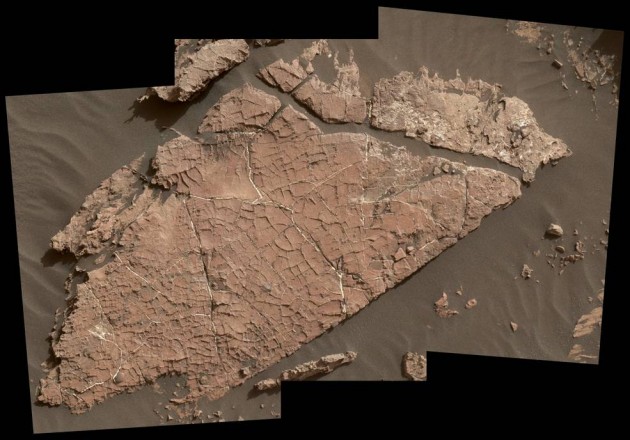New data collected by NASA’s Mars Curiosity rover suggests the planet once had lakes, or at least wetter conditions, something scientists have suspected for years. Scientists came to this conclusion after examining a rock slab called Old Soaker, which is said to feature a familiar network of cracks typically found where muddy ground has dried and cracked.
The newest data is the latest bit of mounting evidence suggesting Mars was once much wetter.
According to scientists, the cracked layer was formed more than 3 billion years ago and subsequently buried by layers of sediment. Wind later eroded the layers above Old Soaker, exposing raised ridges at the investigation site. Basically, these cracks filled with material, became stratified, and now they’re sitting on top of the rock.
Other evidence found at the site includes layers of sandstone interspersed with layers of mudstone, along with a layering pattern known as cross-bedding. This pattern is typically formed where water was flowing more vigorously, according to NASA.
Mars may have once had oceans
“If these are indeed mud cracks, they fit well with the context of what we’re seeing in the section of Mount Sharp Curiosity has been climbing for many months,” said Ashwin Vasavada, Curiosity project scientist. “The ancient lakes varied in depth and extent over time, and sometimes disappeared. We’re seeing more evidence of dry intervals between what had been mostly a record of long-lived lakes.”
NASA said scientists want to examine other areas around Old Soaker for clues while it continues to analyze existing data. Scientists have long suspected Mars was once very different, and the latest evidence is further proof it may have been much wetter than it is today.














